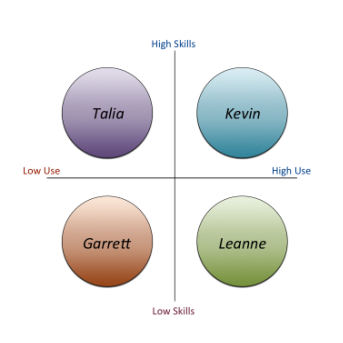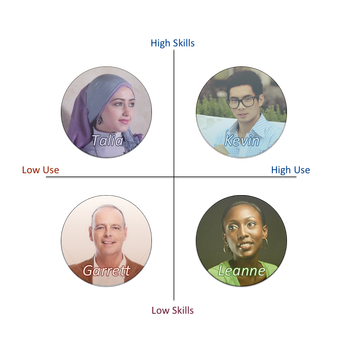|
Just like any feature or user flow you might prototype, it’s a good idea to draft personas early, acquainting yourself with the people you will design for and what their needs are. These profiles will grow and change with the product cycle, as you better establish what you’re building and how these hypothetical people will or will not use it. In the beginning, it’s best to start with a few that are as different as possible, to explore the widest variety of use cases.
|
Starting Simple
|
Two variables helpful for brainstorming are how often someone uses your product, and how skilled they are with the service your product covers.
‘Skills’ can take many forms, and what skills a user leverages will be unique for each product— if you create financial software, a user may be skilled with managing money, managing numbers, or learning new software. In some cases, the aptitudes involved won’t overlap, and it’s worth exploring them as separate traits within your persona breakdown— e.g.: ‘good with numbers, but bad with computers’. Depending on the nature of your product, how you define ‘Low Skills’ or ‘High Use’ will be relative. It’s worthwhile to begin with personas that exhibit the highest and lowest examples of each possibility, and adjust later as appropriate. |
Different styles, similar goals
Adding Human Elements

